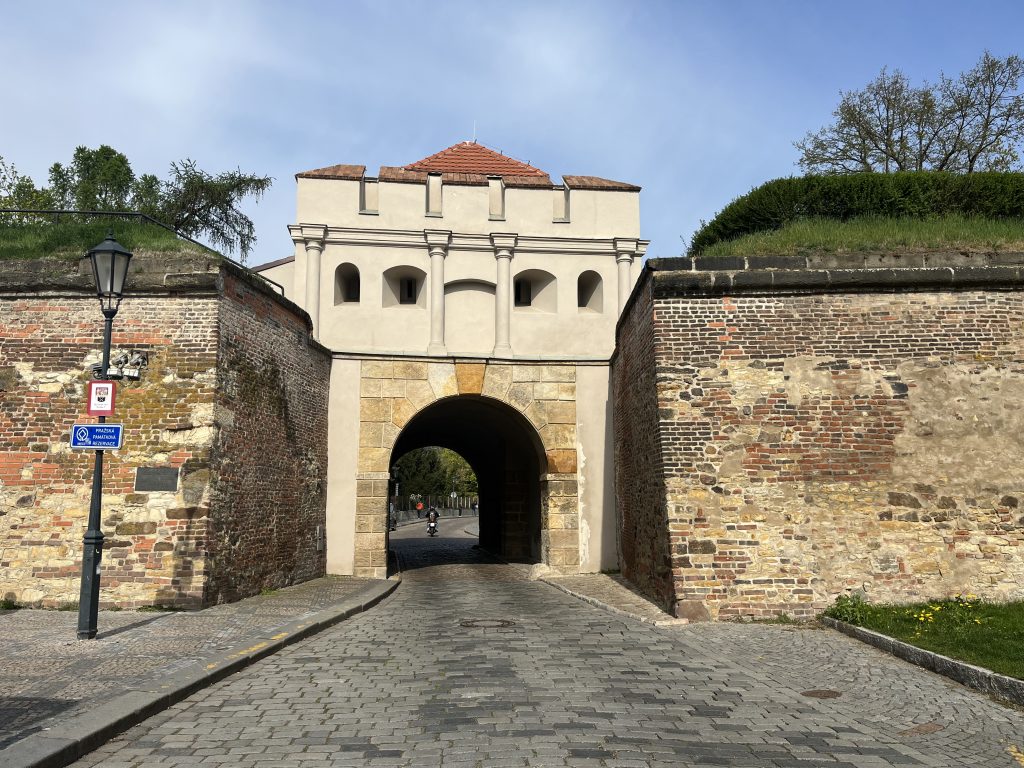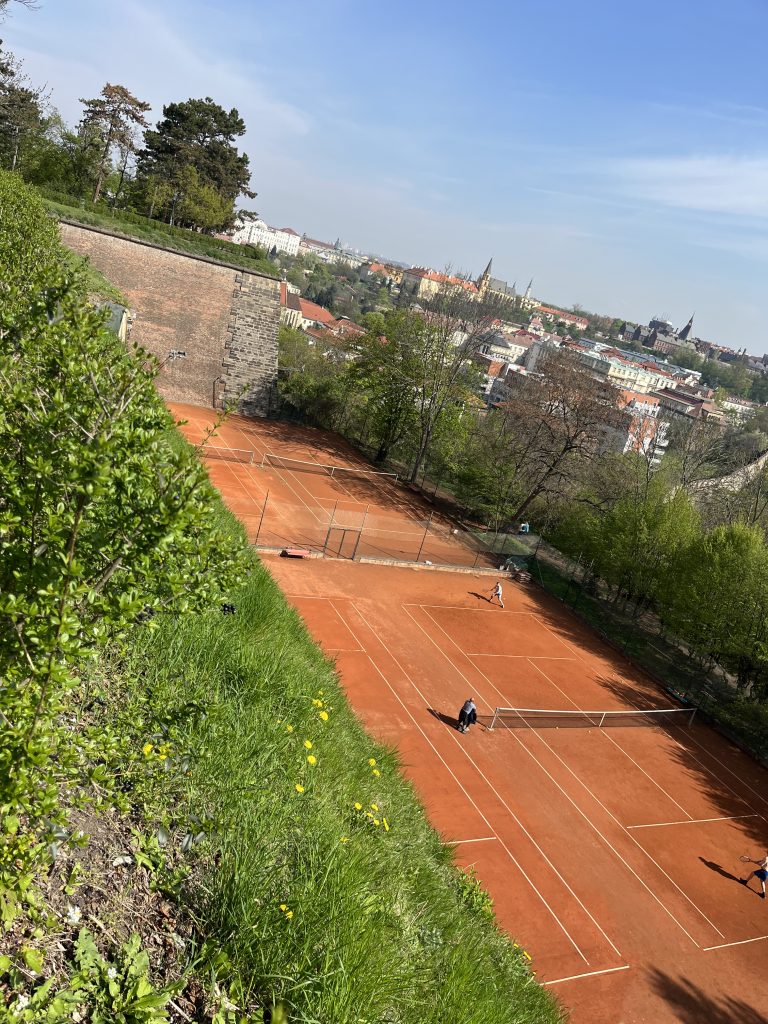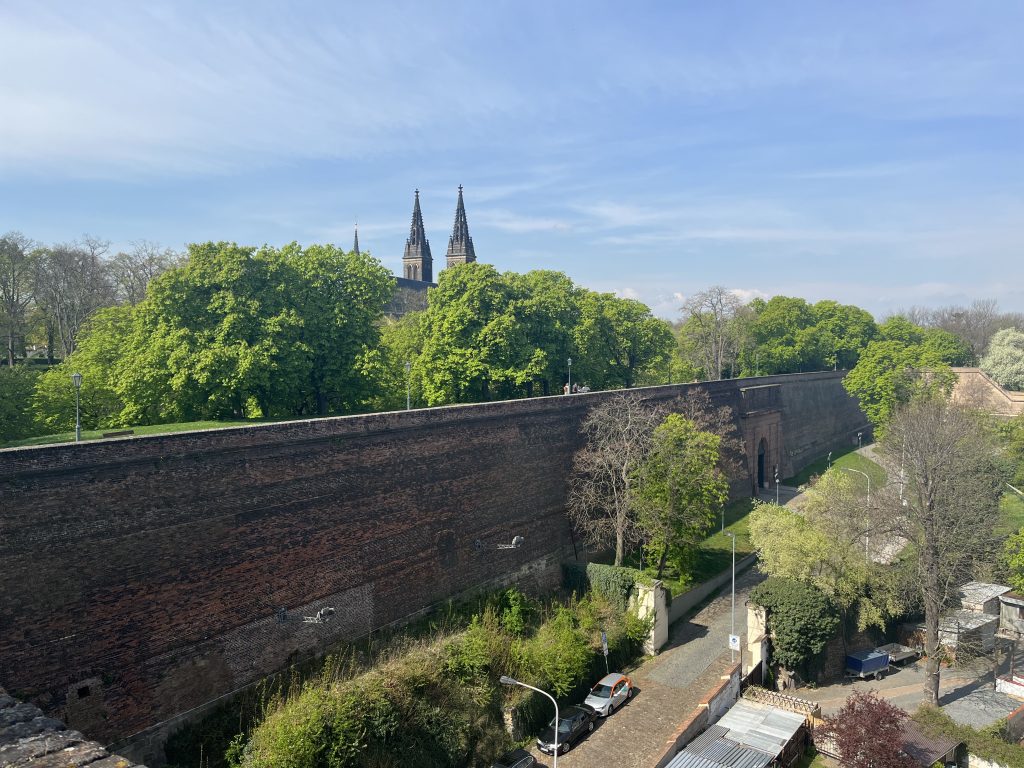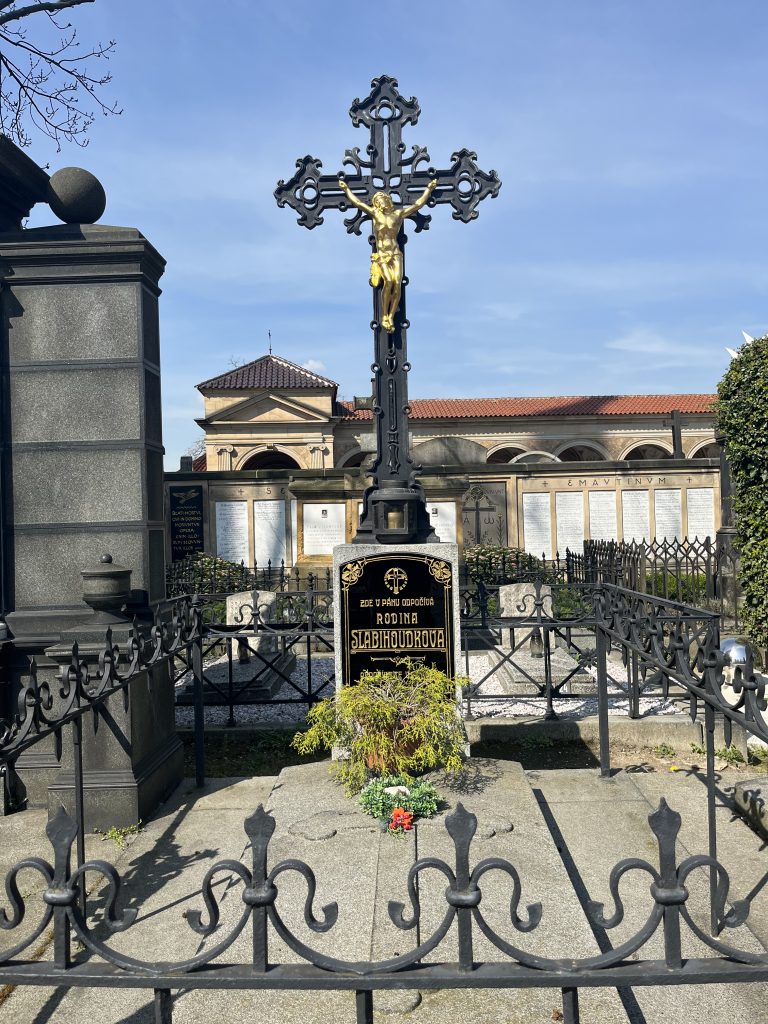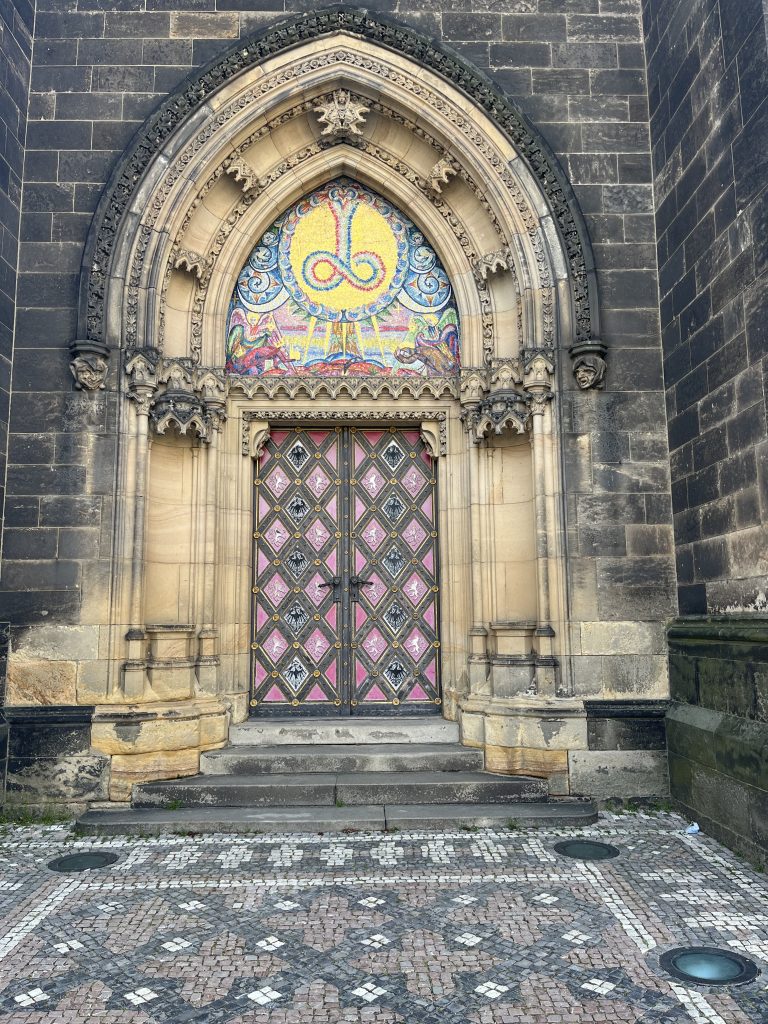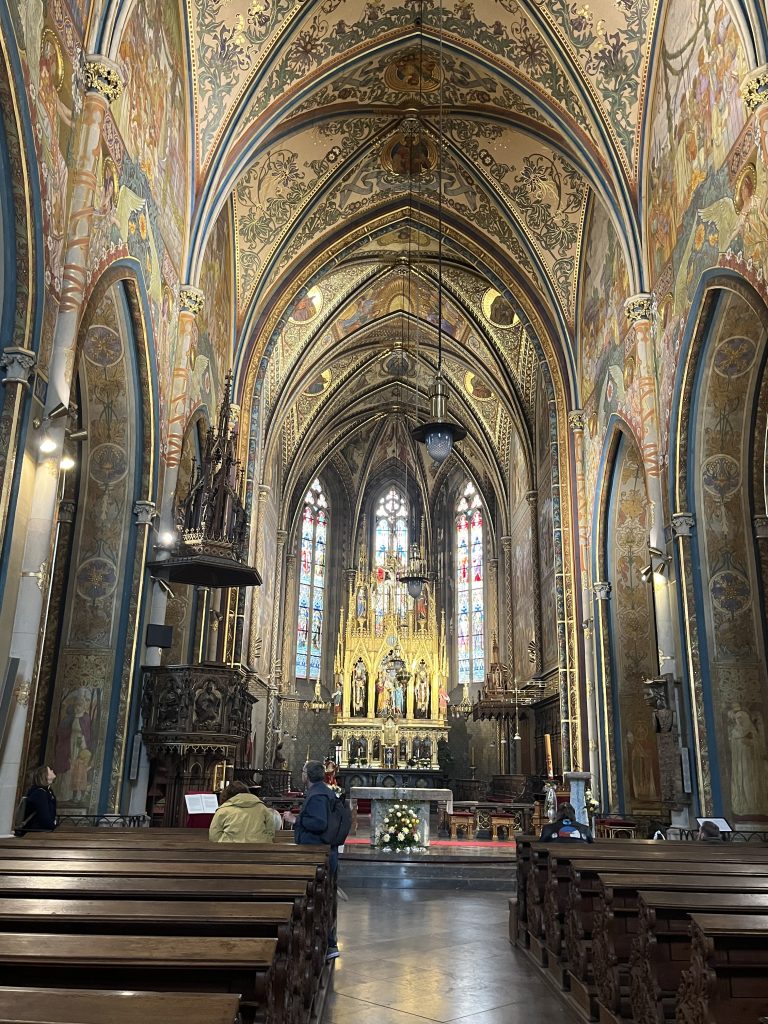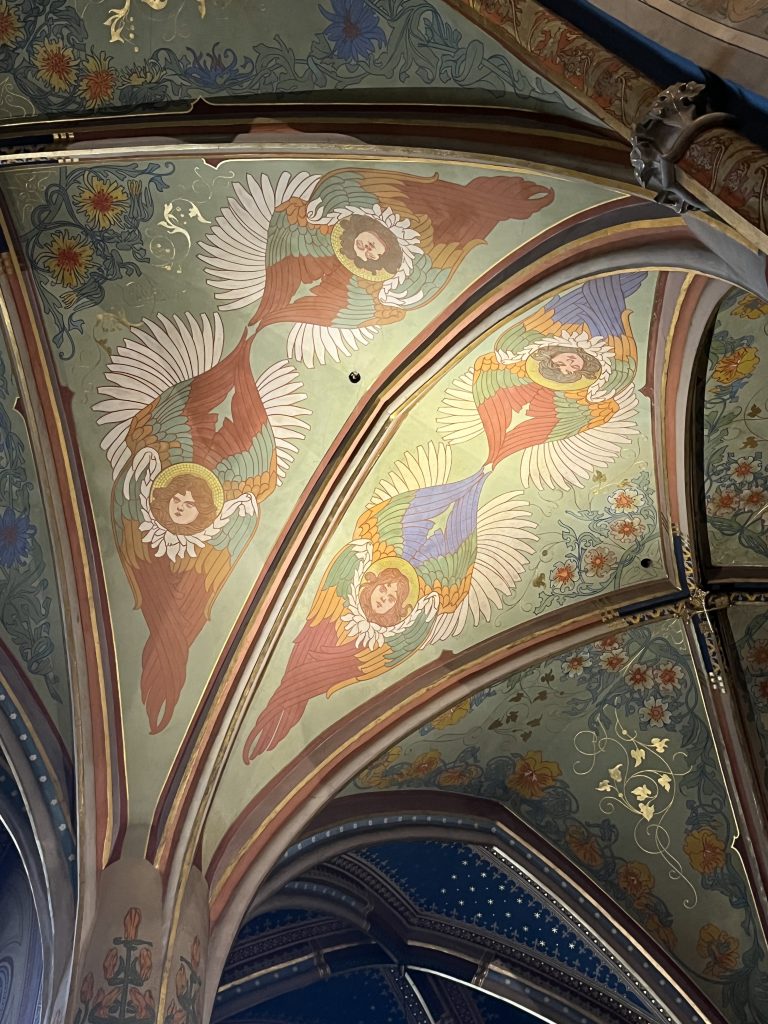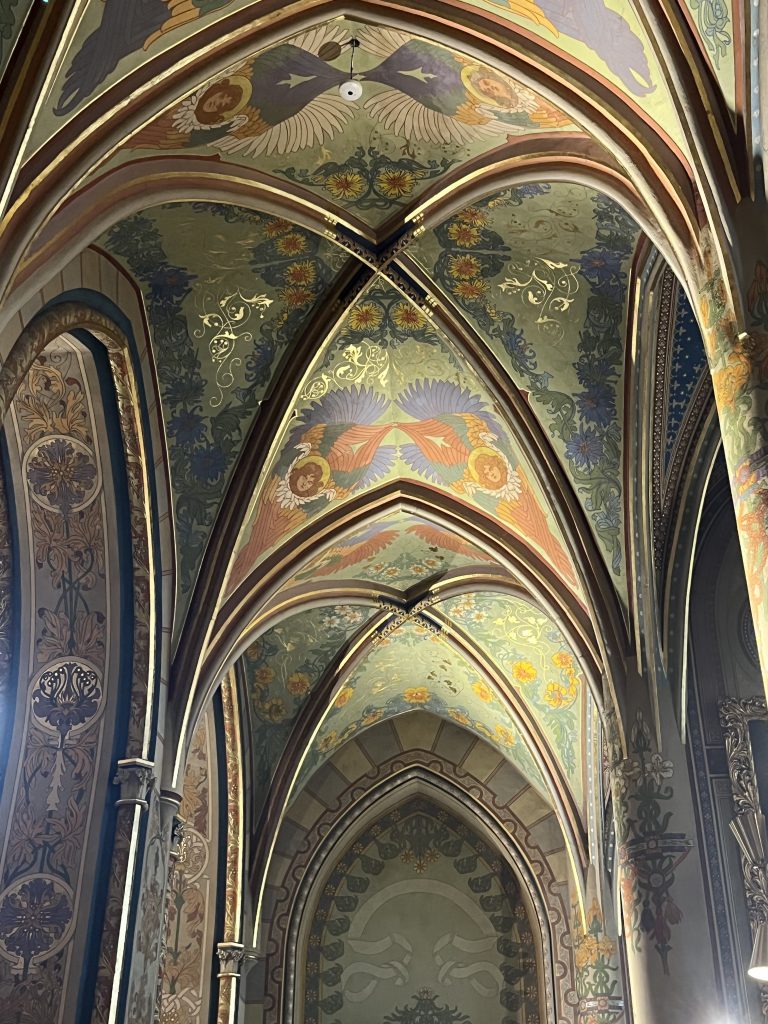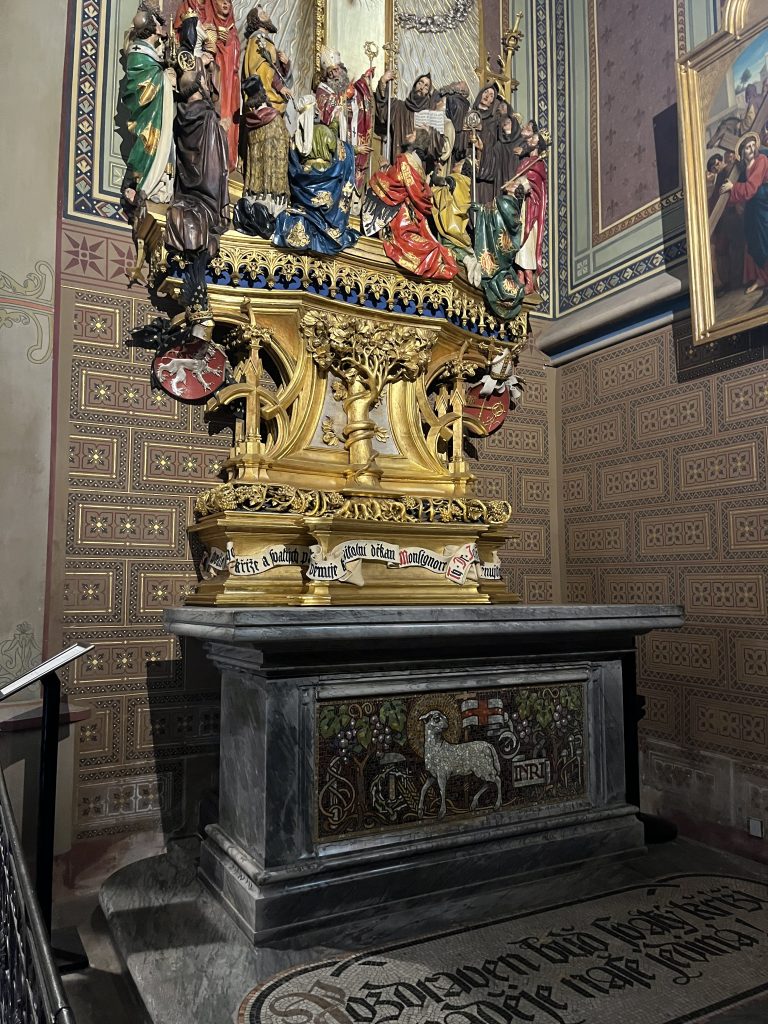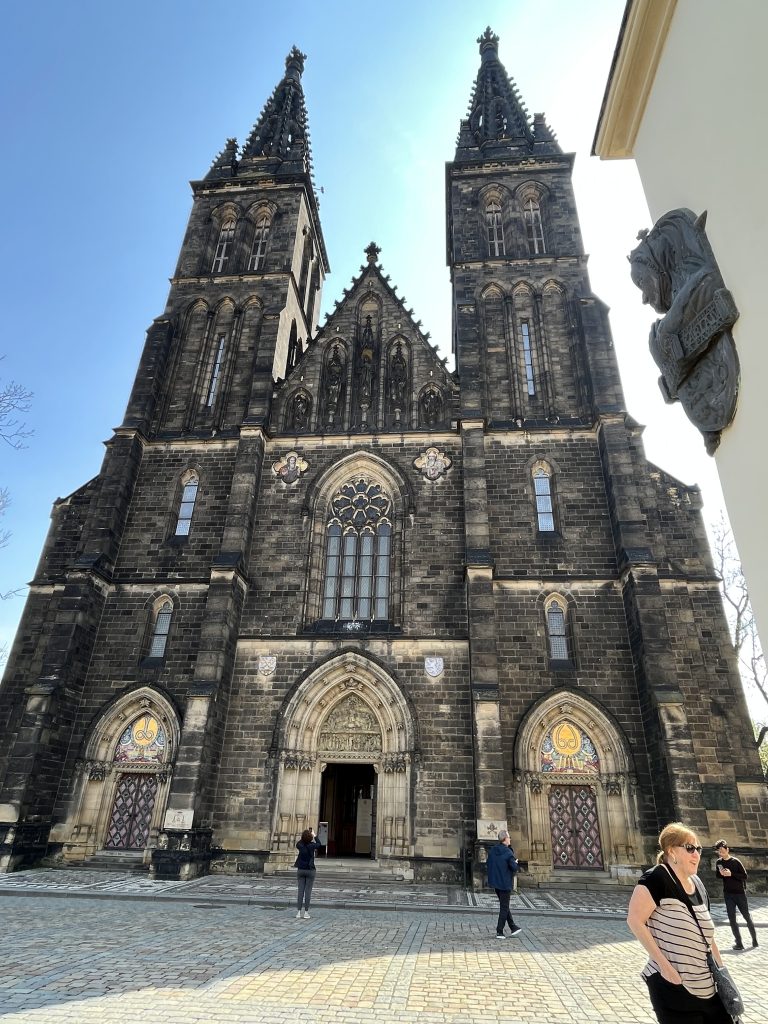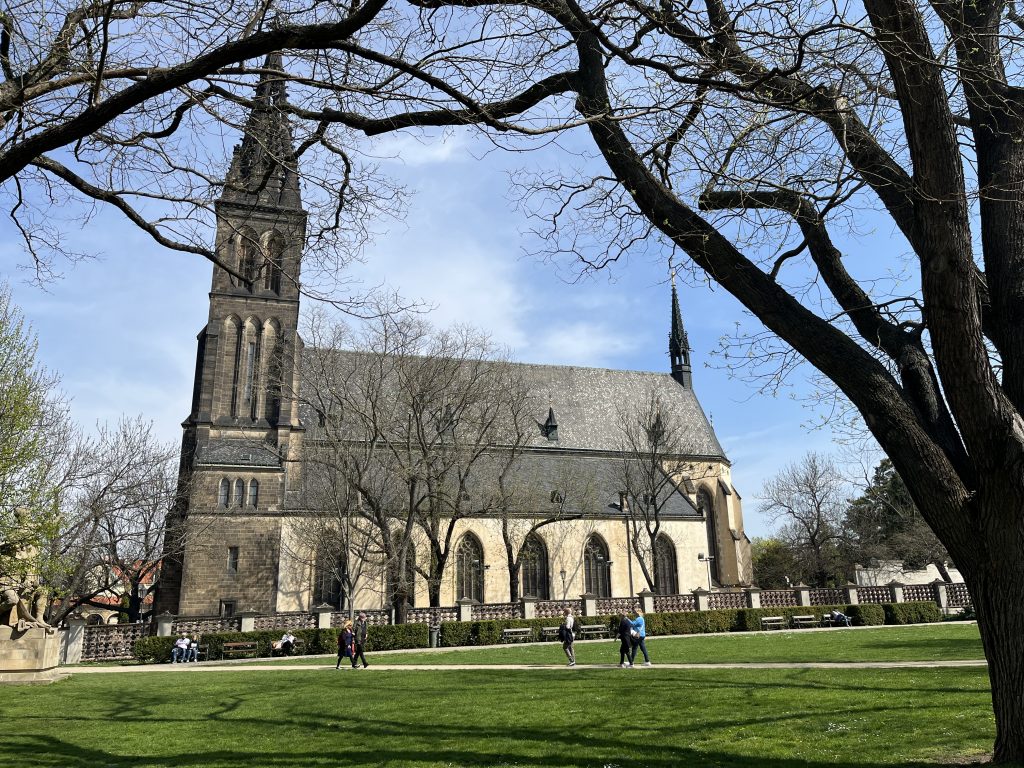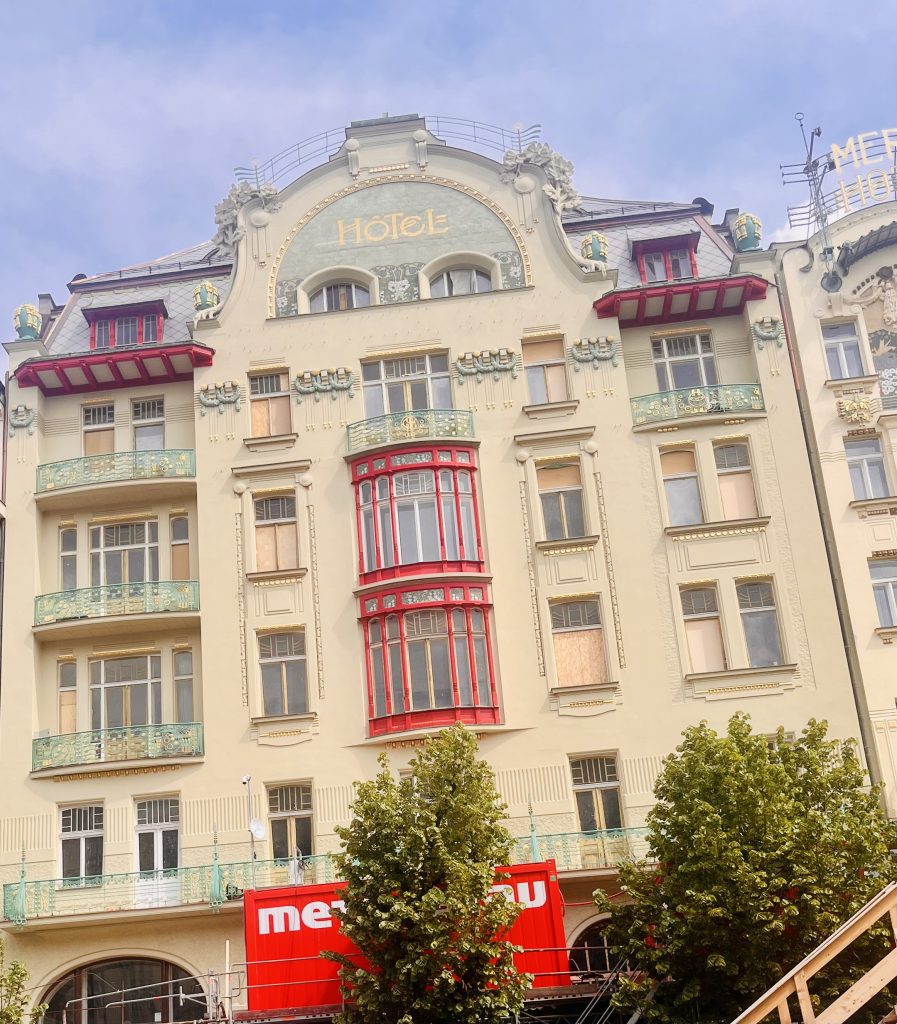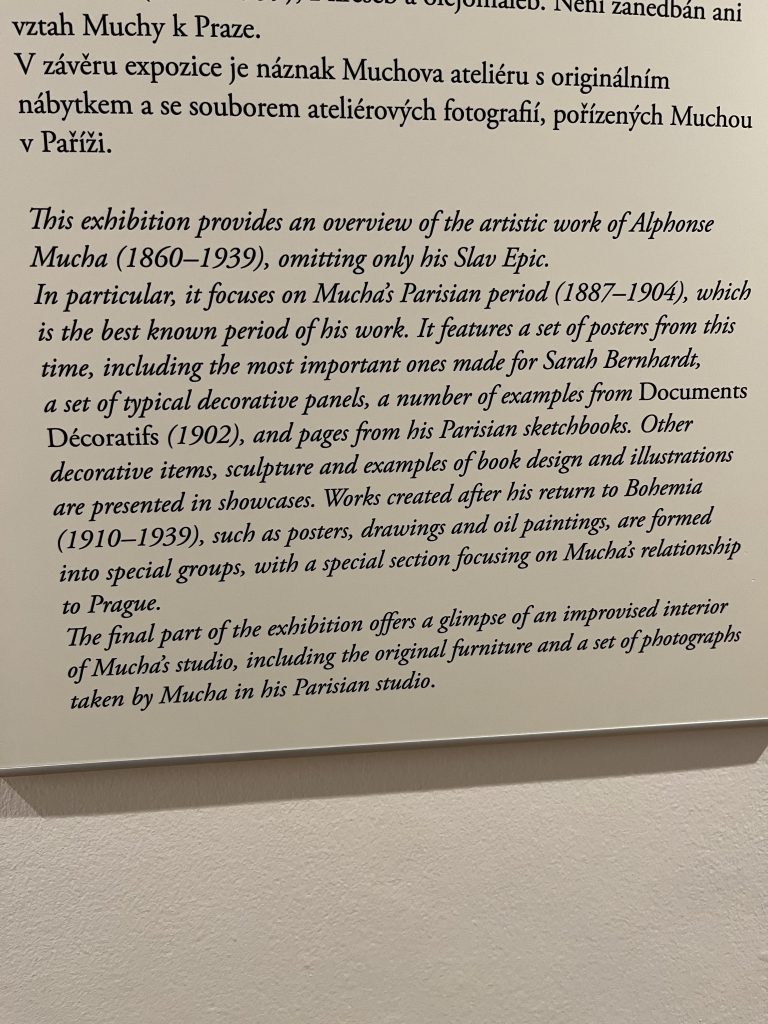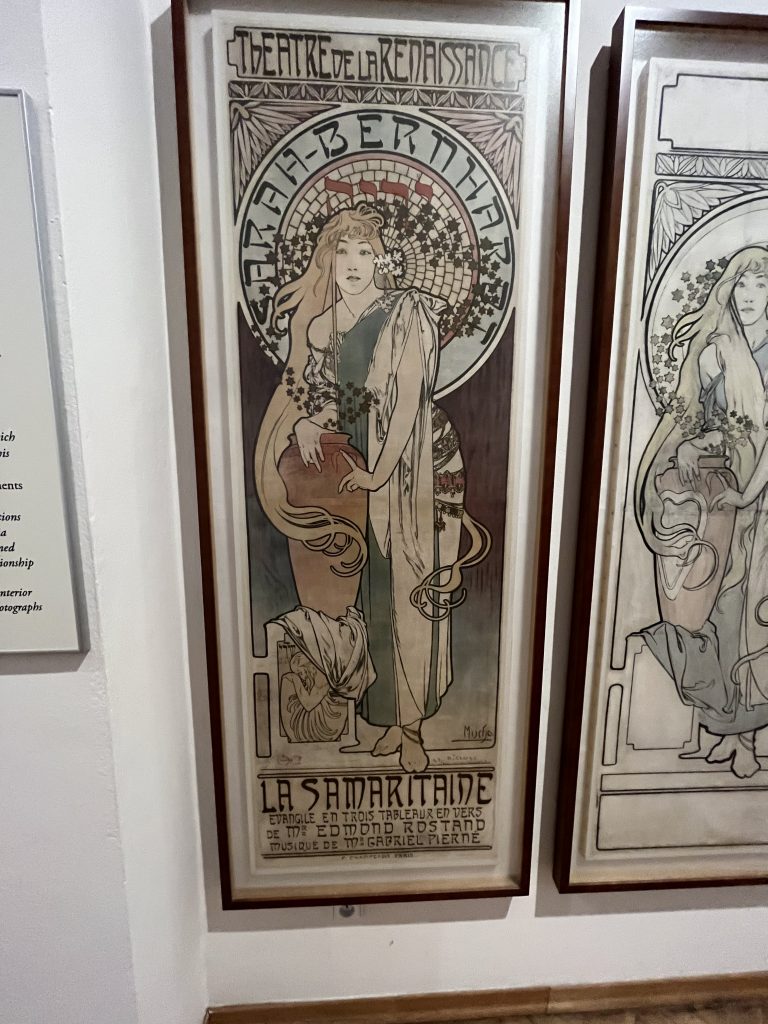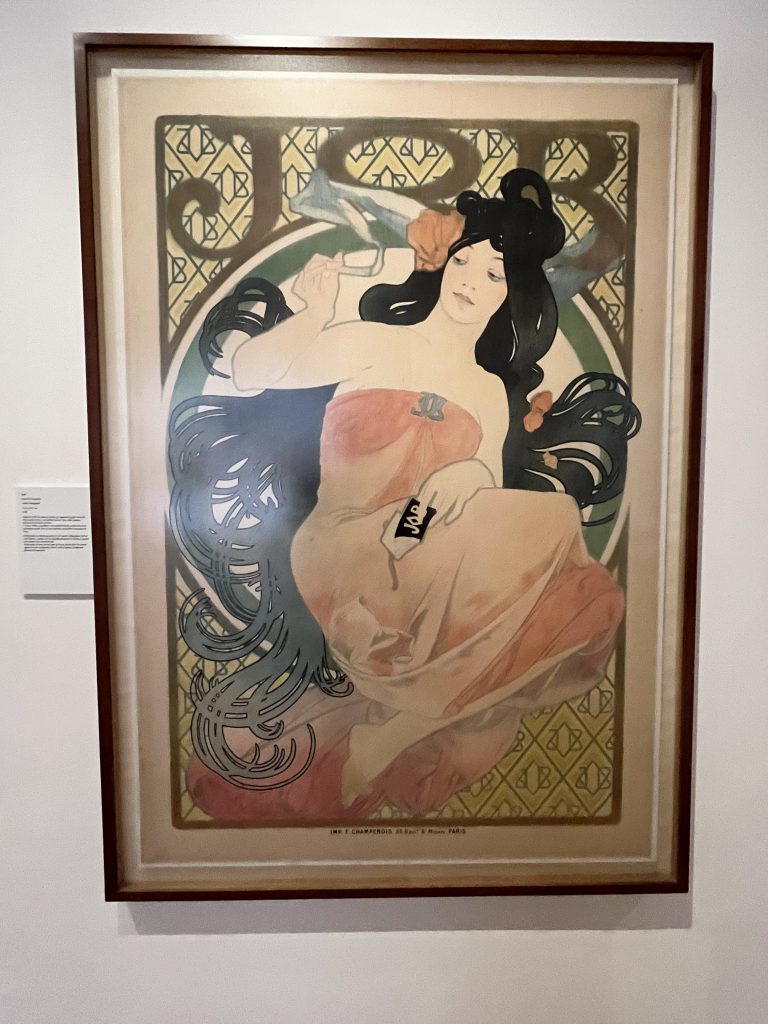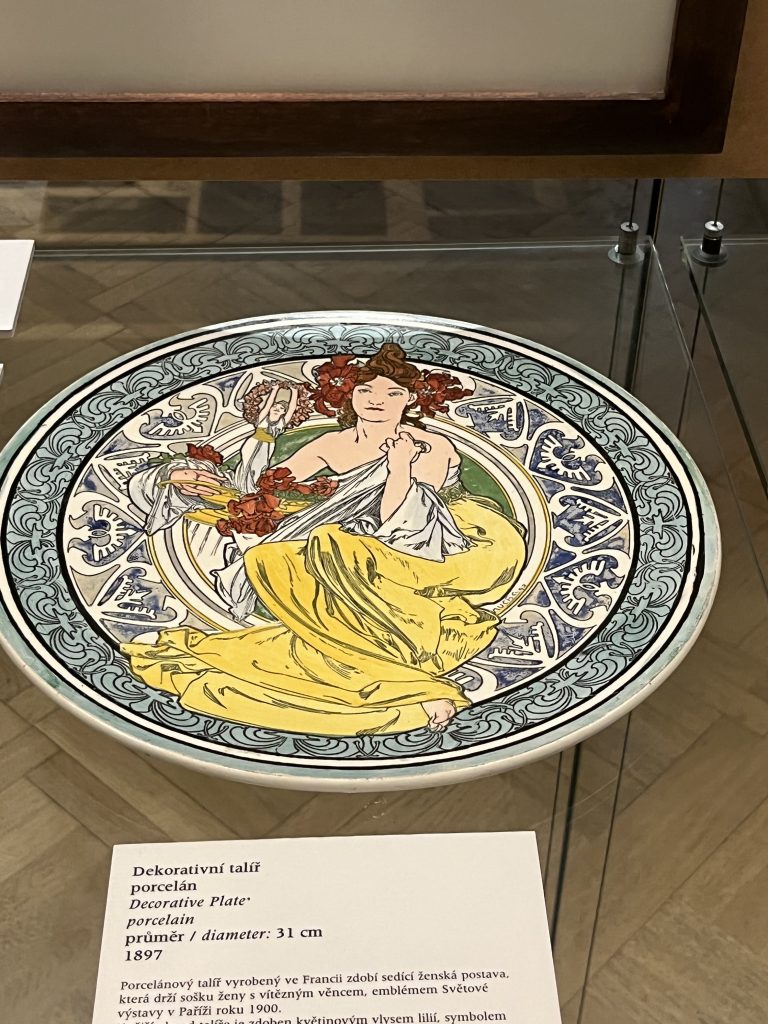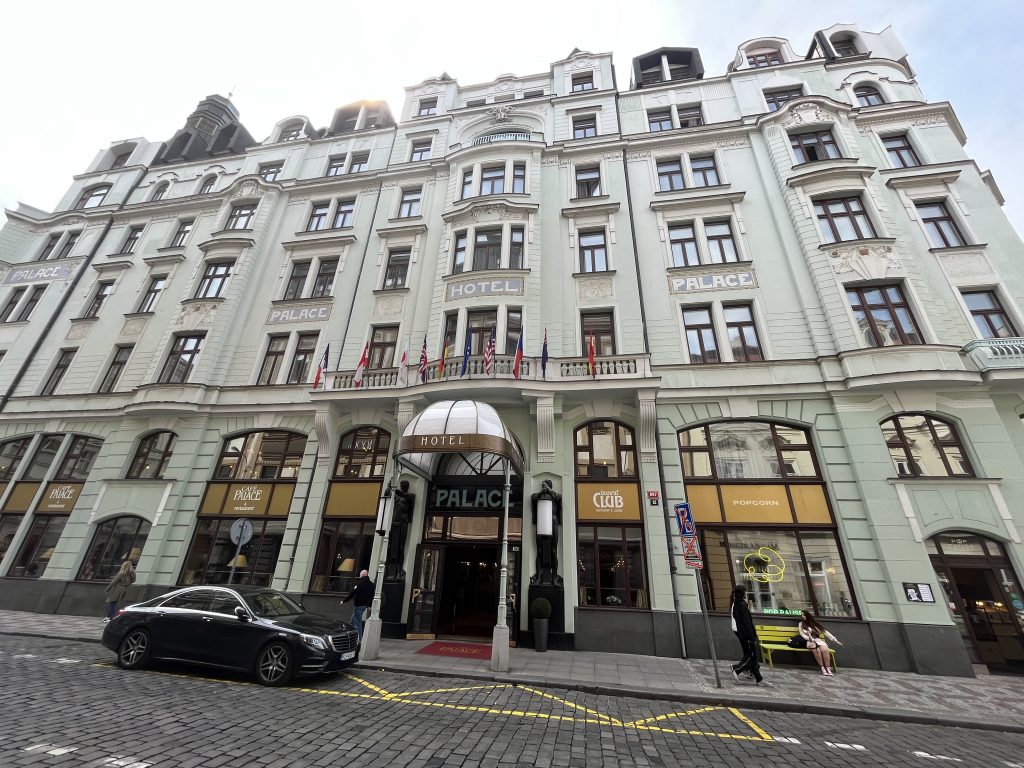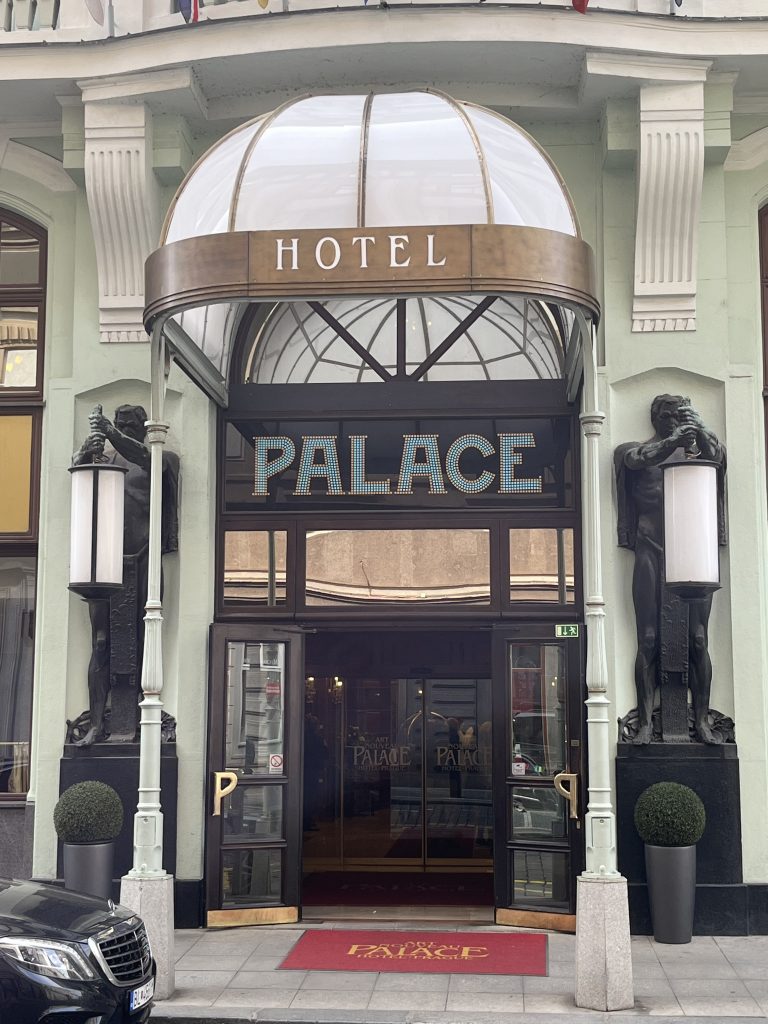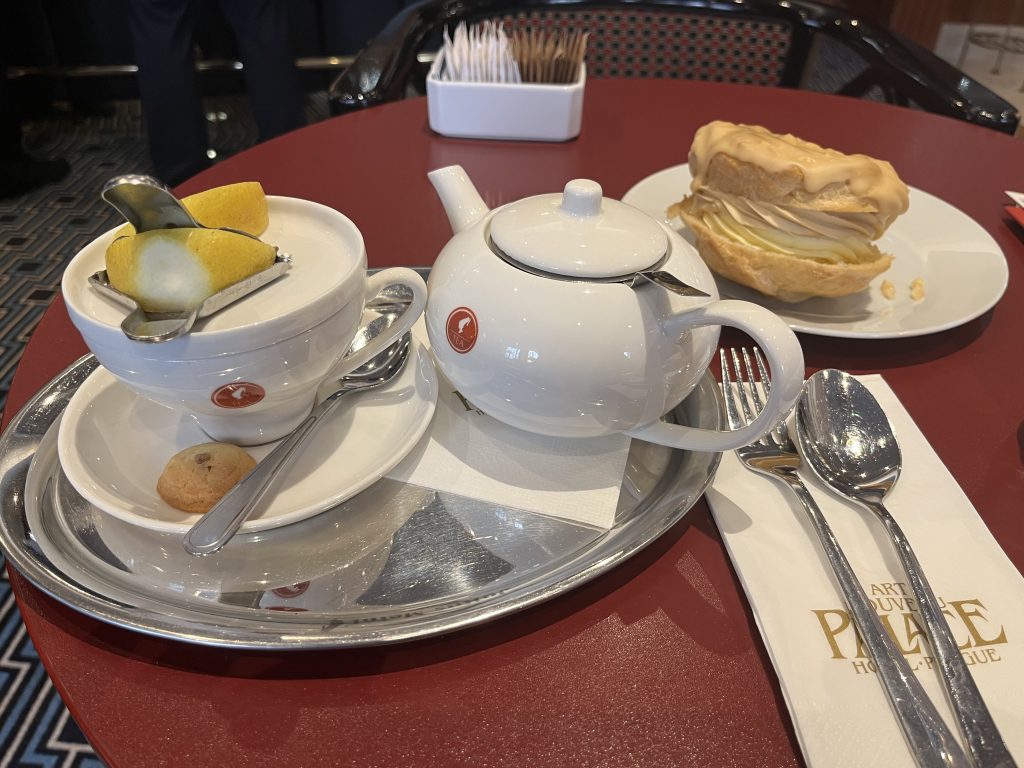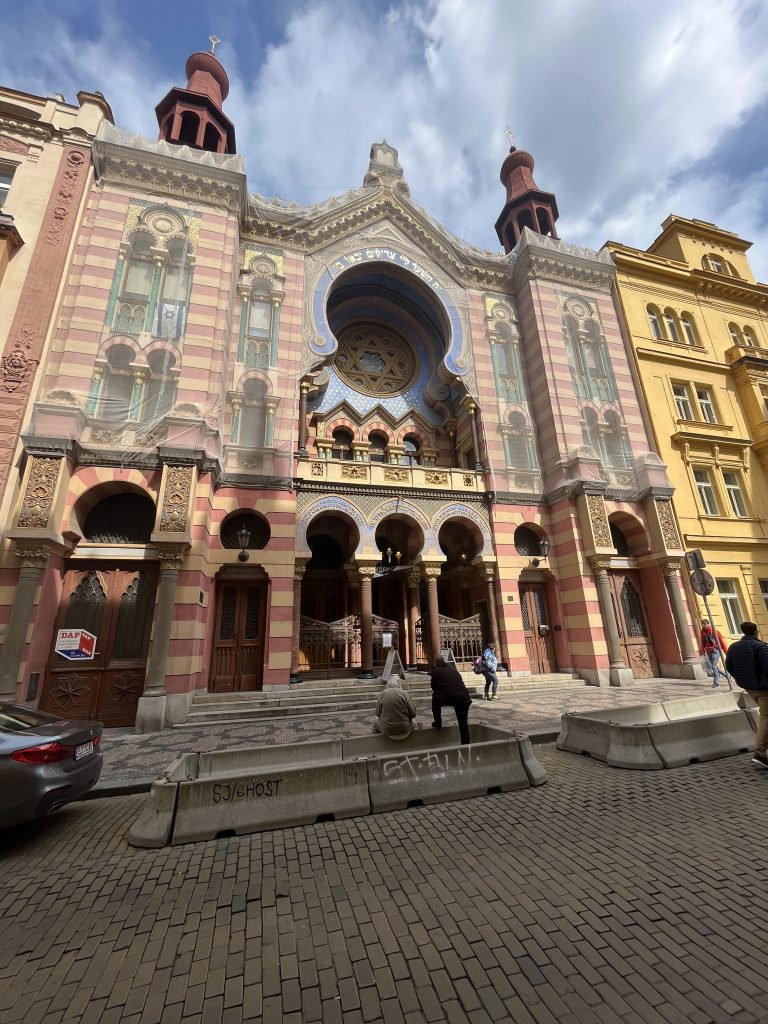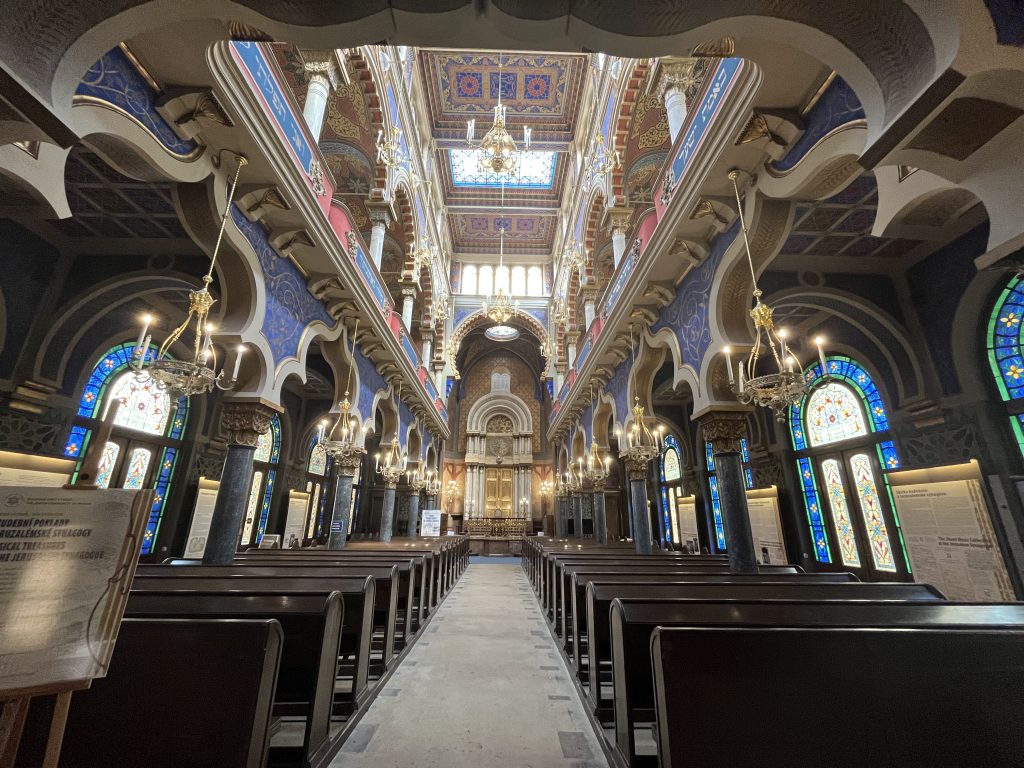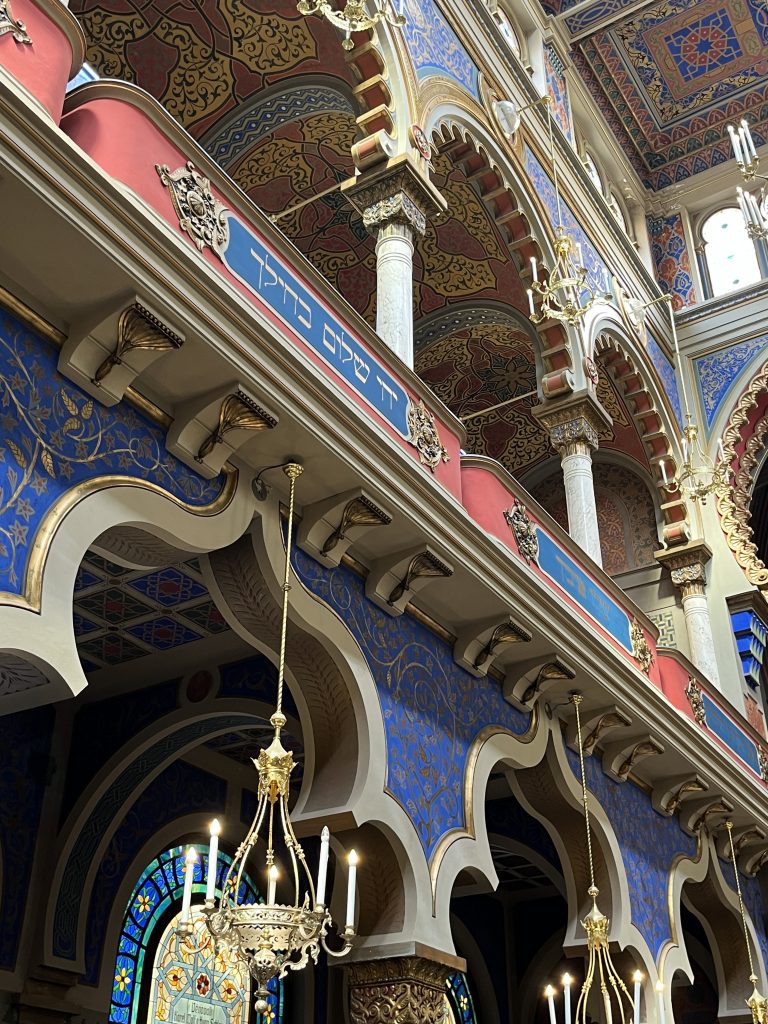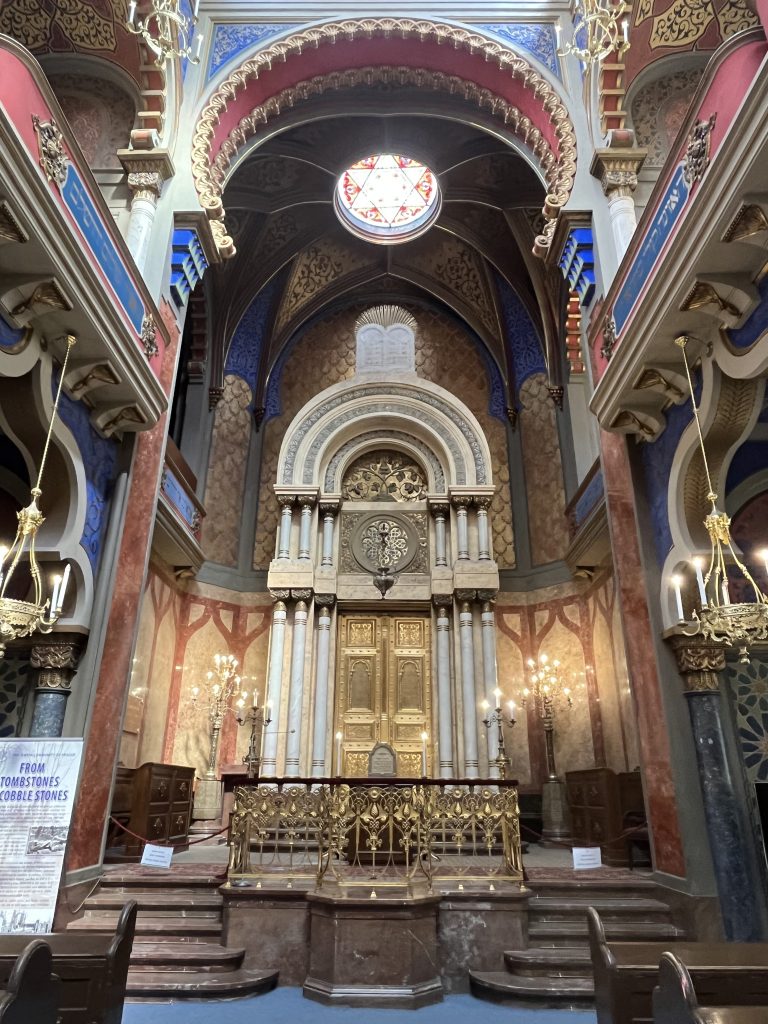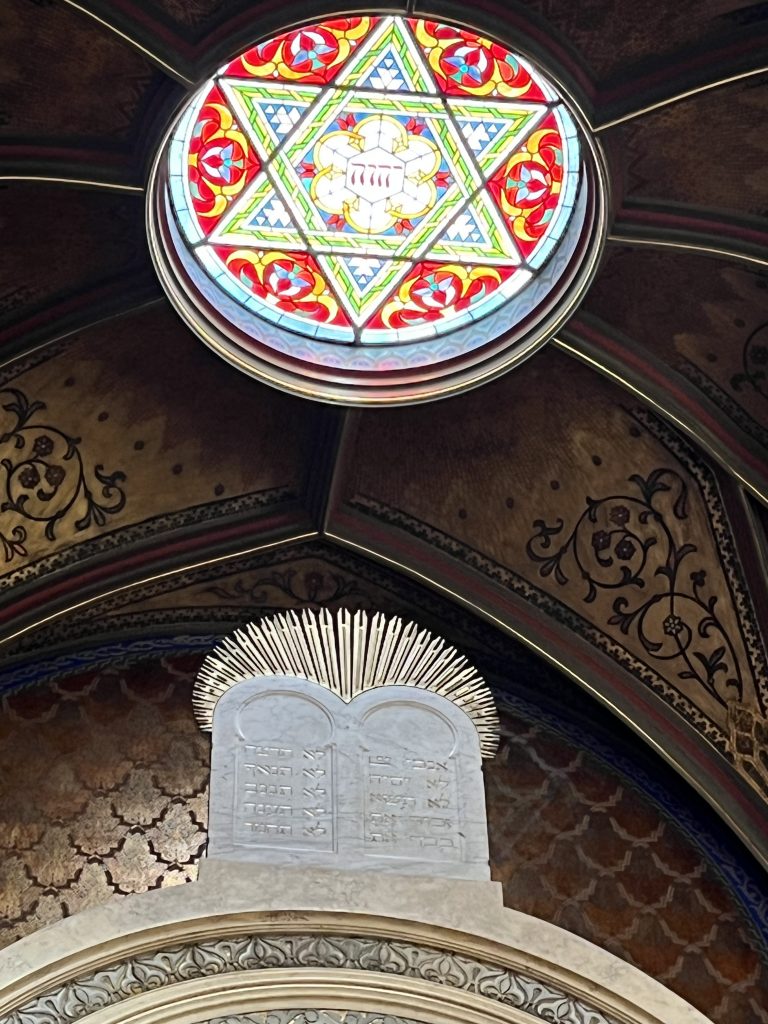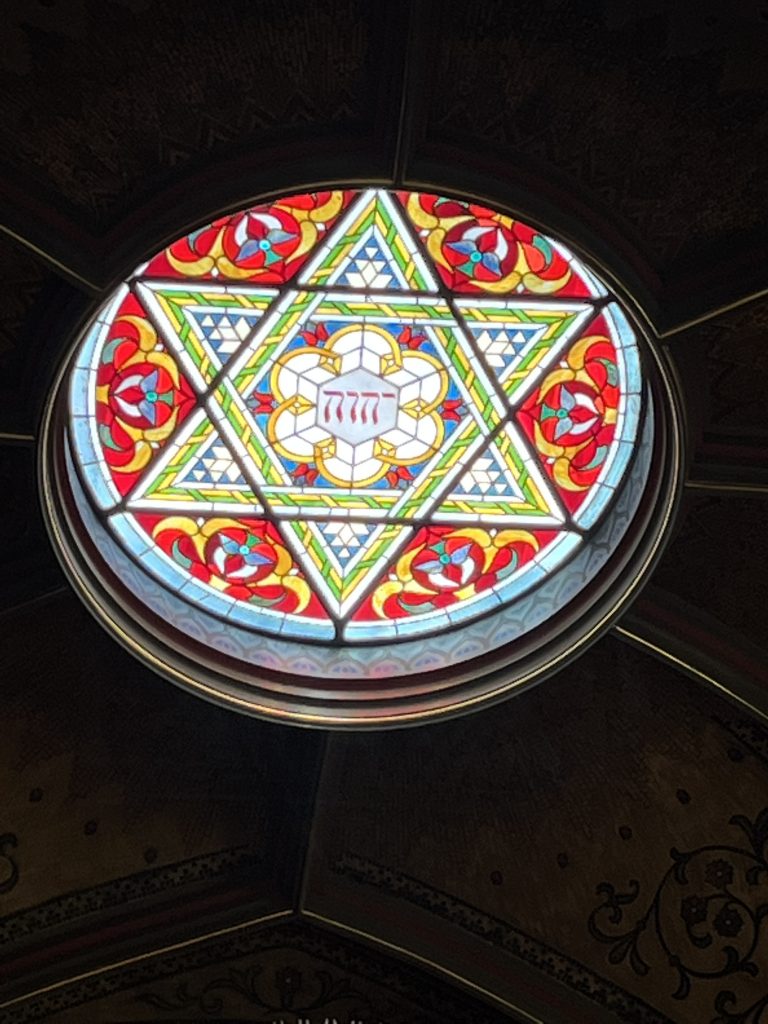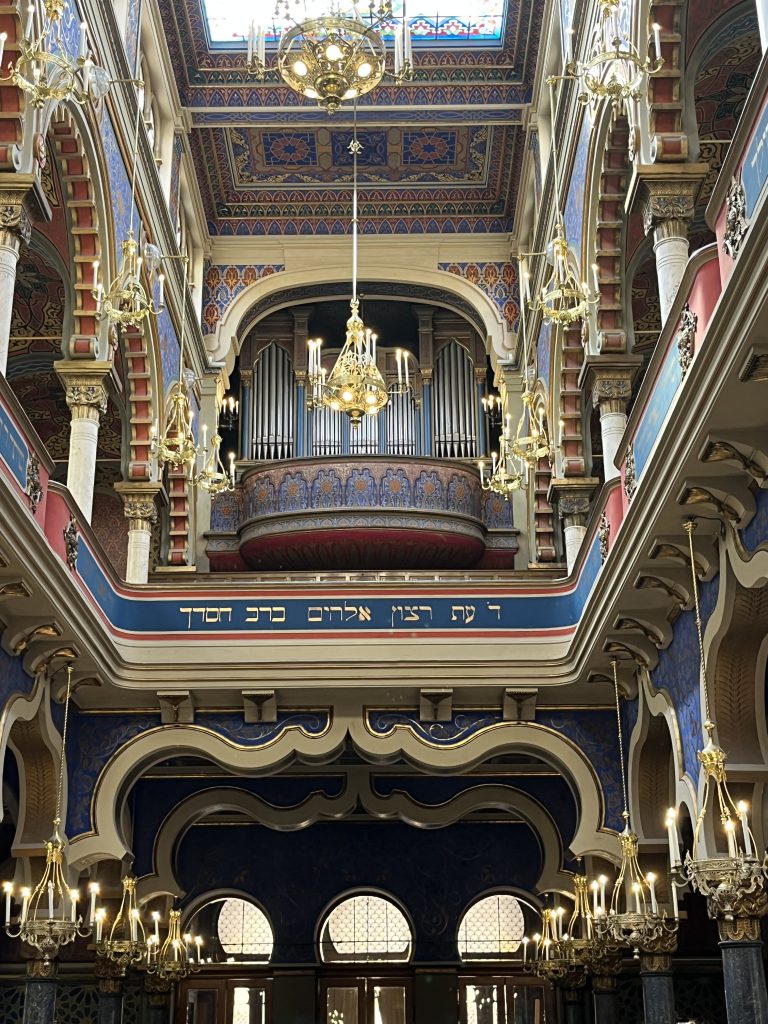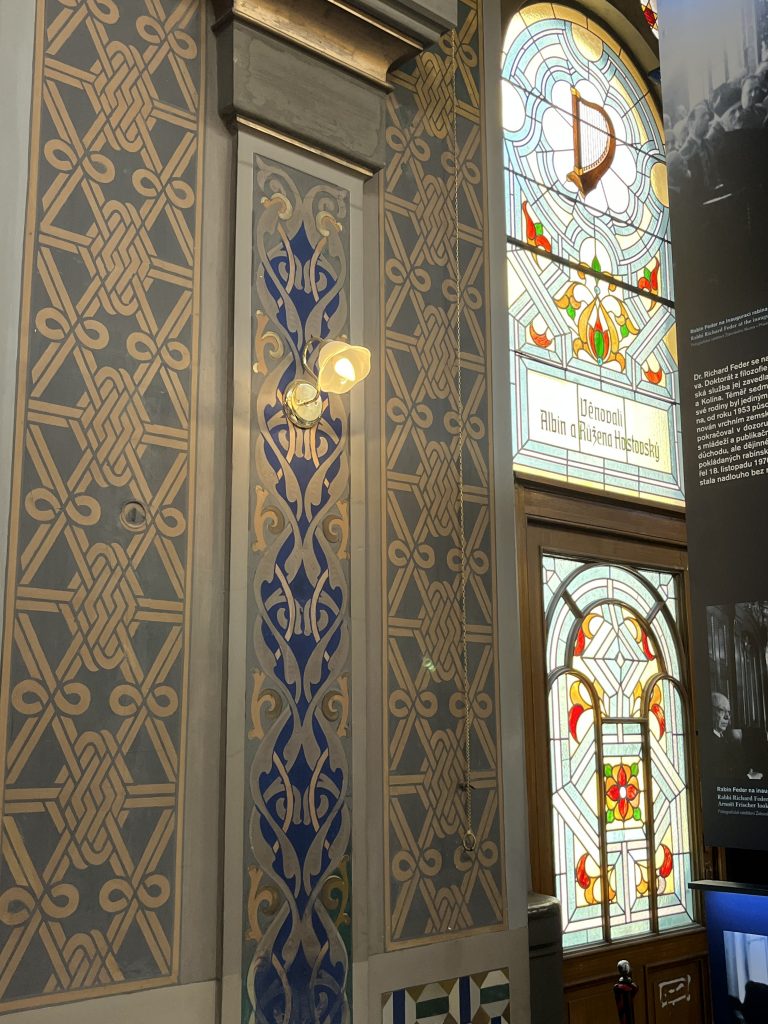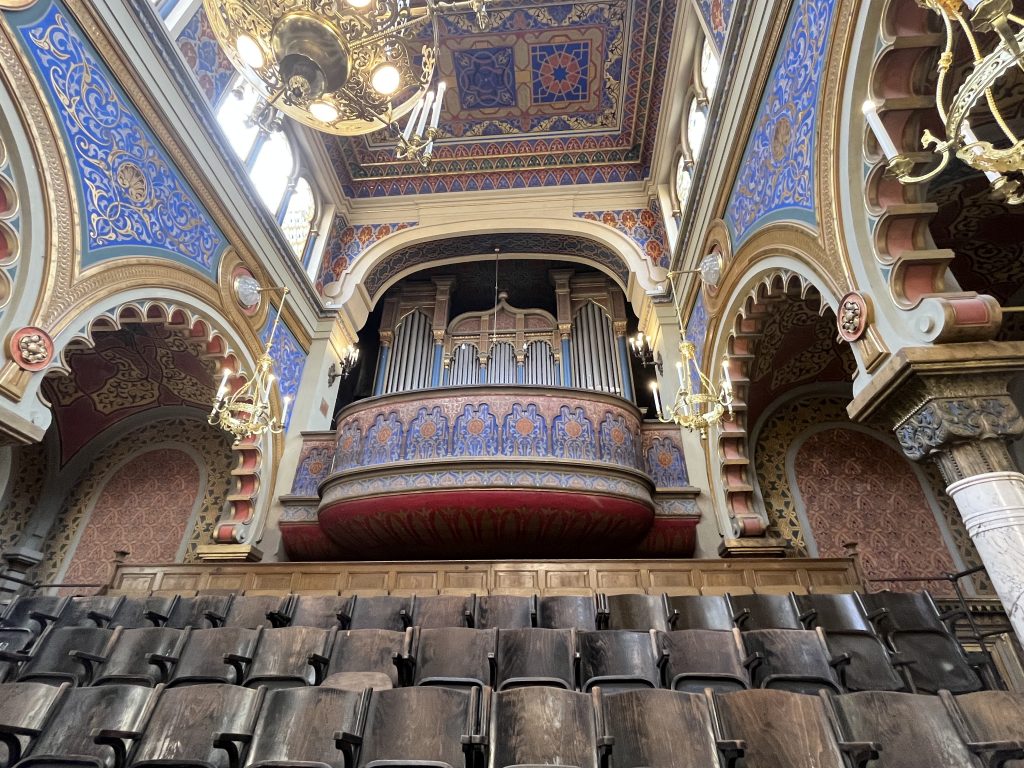Picture gallery at the bottom of the blog!
The day broke clear and sunny. Our plan was to meet Mattie Crenshaw at the subway station near the hotel where she would play tour guide for us for the morning. Pavel suggested we visit a place called Vyšehrad(https://en.wikipedia.org/wiki/Vy%C5%A1ehrad) an historic fort south of the city on the east bank of the Vltava River, downriver and opposite from the Prague Castle. Inside the fort are the Basilica of St. Peter and St. Paul and the Vyšehrad Cemetery, containing the remains of many famous Czechs, such as Antonín Dvořák, Bedřich Smetana, Karel Čapek, and Alphonse Mucha. Mucha is ubiquitous in the shops (more about him later) but seeing his grave started me whistling “mucho, muc)ho, Mucha” all day (for those of a certain generation who remember the lyric to a Village People disco song!).
The fort was a massive brick/masonry star formation built on the foundation of earlier forts in the 18th century. I marveled to think how long it took brick layers to form the sturdy walls and sharp angles. The fortification walls and structure was the first thing that drew my attention. Much like Fort Ticonderoga or even Fort Negley in Nashville (whose walls are gone but the pattern remains), these are engineering and construction marvels. In the middle of Vyšehrad is the massive twin-spired Basilica of St. Peter and St. Paul constructed between 1883 – 1903. Until a high school class showed up, we were virtually alone, save for an ancient nun. It was a delight to the eyes and bore the distinctive accents of the Art Nouveau movement. Afterward we enjoyed a walk around the ramparts overlooking the river and a leisurely stroll through the lovely gardens. This was quintessentially a park for the people, not the tourists, and it was a gem.
At the subway Mattie had to head south to work while we headed back to the city. After a fortifying break at an outdoor café, we marched on to the Mucha Museum (https://www.mucha.cz/en/). One of the leading figures of the Art Nouveau movement, his posters made in Paris in the 1890s form the best-known and world-famous segment of Mucha’s work. It was through them that he managed to promote his own version of the new decorative style. The primary group consists of posters for Sarah Bernhardt, who was a famous Parisian actress. Like Gustav Klimt’s art in Vienna, images from Mucha are all over the city and on every tourist object one could buy. Leslie Higgins said it was a must visit, but it was already on my list. It didn’t disappoint. While not large it is comprehensive of his style with a very informative video. Amy chose to do some shopping while I was getting my art geek on, so we met up in the Art Nouveau Palace Hotel across the street.
From there we walked on to the Jerusalem Synagogue, Prague’s largest, done in a Moorish Revival/Art Nouveau style in the late 1800’s. It, too, was a feast for the eyes. Nashville’s Downtown Presbyterian church with its Egyptian Revival glory has nothing on this beauty. The place was simply stunning. We were grateful for the interpretive panels throughout that told the story of the Prague and the Czech Jewish community through the ages. Lessons we need to continually confront. We were so glad to have spent the time in this beautiful city that has so much to teach us.
The final serendipity of the day was coming back to the hotel, getting our COVID test (negative! Yay!), and running into our new friends, Chris and Debbie, for dinner. Getting to know them over this trip has been one of best gifts of our time. Hard to believe we’ll be back on the plane coming home in the morning.
